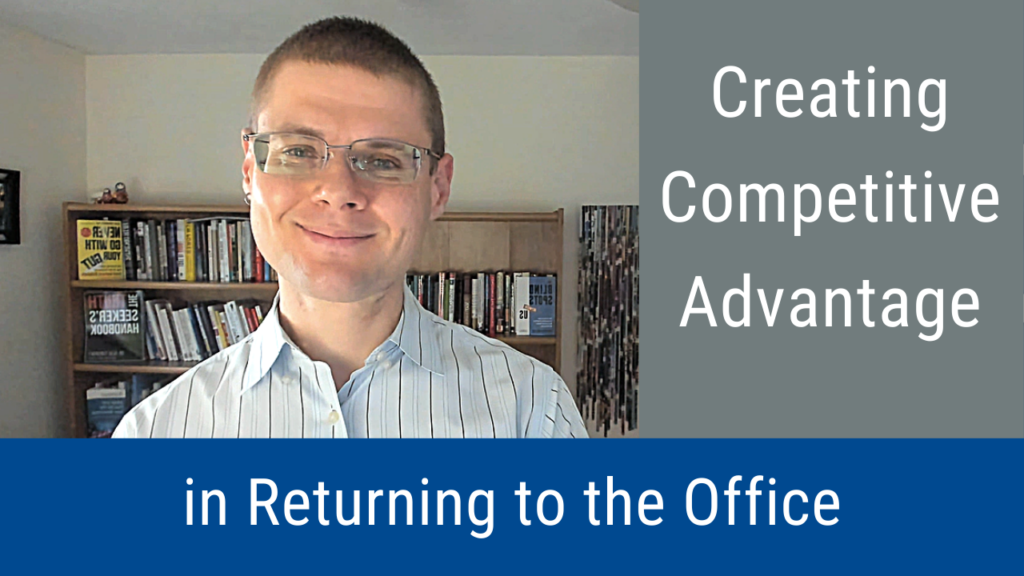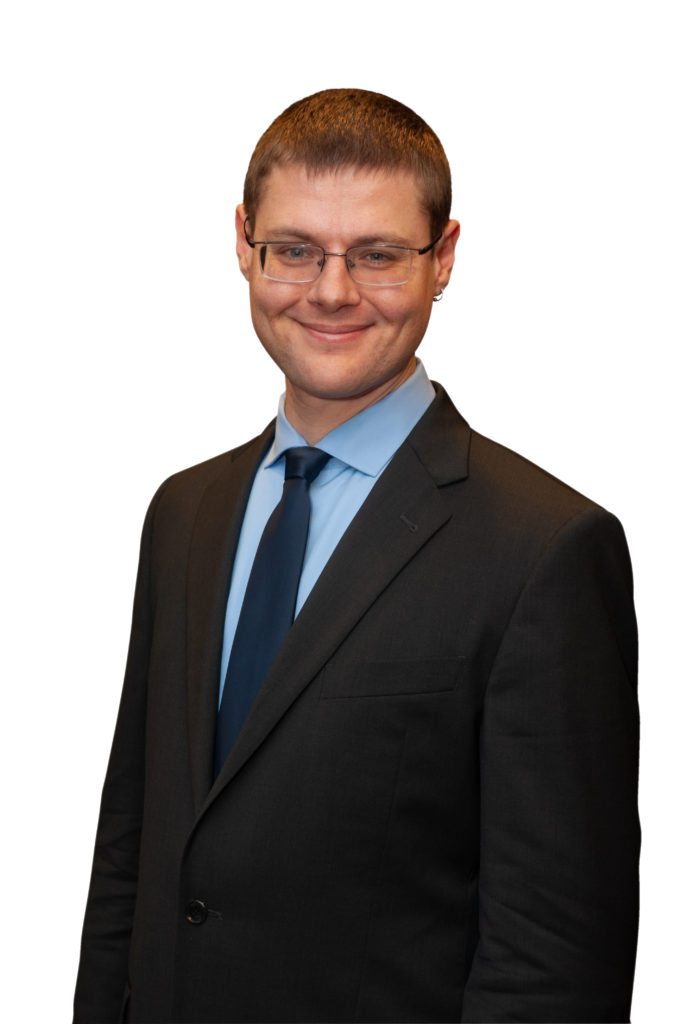
For creating competitive advantage in the new normal, forward-looking leaders need to let go of their preferences for in-office work. They need to adopt a hybrid-first model for most staff, and support full-time remote work for a minority. That’s the key take-away message of this episode of the Wise Decision Maker Show, which describes how to create competitive advantage in returning to the office.
Video: “Creating Competitive Advantage in Returning to the Office”
Podcast: “Creating Competitive Advantage in Returning to the Office”
Links Mentioned in Videocast and Podcast
- Here is the full article on Creating Competitive Advantage in Returning to the Office
- The book Returning to the Office and Leading Hybrid and Remote Teams: A Manual on Benchmarking to Best Practices for Competitive Advantage is available here.
- You are welcome to register for the free Wise Decision Maker Course
Transcript
Hello, everyone, and welcome to another episode of the wise decision maker show where we help you make the wisest and most profitable decisions. And today we’ll talk about how you can create a competitive advantage in the return to the office. Mostly, there’s the thought that returning to the office is a huge pain point. So it’s seen as really problematic, really challenging. There’s a lot of tension, a lot of conflict, and a lot of stress. But you don’t have to think about it that way. And it doesn’t have to be that way. The silver lining of returning to the office, which is a real challenge, is that if you do it better than your competitors, you can truly create a competitive advantage for yourself, and seize that competitive advantage going forward. This is a once in a lifetime opportunity, we’re very returning to the office. So you don’t want to let this opportunity go without taking, seizing it and making sure that you make it a source of competitive advantage for yourself through making sure that you take care of your most important resource, your people. Now, too many employer plans clash with what employees want. Most employers, something like two thirds to three quarters want a hybrid schedule, in order to satisfy remote, and employees and employees who are in favor of hybrid schedules, which is over 85% of employees on average, when you look at extensive surveys, 85% of employees want a hybrid or fully remote schedule. And something like maybe 50 to 60%. One, the hybrid schedule, and something like 25 to 35% want a fully remote schedule, depending on the survey. So that is something that you want to be thinking about as you’re going forward. Simply a hybrid schedule without a fully remote option will not satisfy all employees, and many will resign. This is the time of the greatest resignation. Many will resign. According to surveys, 40 to 55% are ready to resign if they don’t get their preferred work arrangements. Of course, some of that is going to be fully remote people, some that is going to be hybrid people. Unfortunately, there are still many, many employers who want their employees to go back to the office full time. It may sound silly, but that’s exactly what’s happening. So this new normal that we’re living in, really challenges leaders to make much better decisions. Too many employers just say that people are our greatest resource, but aren’t really tapping that great resource but human resource. They make decisions. Employers make decisions that they are comfortable with, they feel good about going back to the office, and they want to be back in the office. They’ve succeeded in their careers to 10 2030 years as a leader. By being back in the office, they feel successful that way. And they want to return to that feeling of success after this feeling of chaos, lack of control, lack of accountability, oversight, lack of engagement with team members during the pandemic, but that’s a bad idea. For the sake of your human resources for retention and recruitment. Forcing office returns is a bad idea. Many people have relocated during the pandemic, something like 20% or so of employees have relocated during the pandemic, maybe less at your company, maybe more, and they may not be available, some relocated to out of state, they may not be available to return to in person work. So that is another thing to think about. Are you willing to lose those employees immediately if you try to force them to return to the workplace? And plenty of other employees will look for a new job, because they don’t want to go back to the office, certainly not full time and may not want even a hybrid. But the best model for most employees is a hybrid model with some fully remote option, something like maybe 70% of your employees 70-80% of them being hybrid coming in a day or two a week. And the rest something like 10 to 20 to 30%, at least 10% being fully remote. This promotes retention if you have those remote options. And that addresses the concerns over jobs switching because you can have remote recruitment and retention. So this not only helps you retain folks, but it helps you recruit those people who want to be full time remote, who are leaving your competitors. Lots and lots of employees are leaving right now. It’s the great resignation, called the Great resignation for a reason. So you want to make sure to take advantage of them leaving and recruit this top talent who’s leaving because they’re leaving because they know they can find a good job elsewhere. So this is something you want to be thinking about how you can recruit these folks to your company. So flexible schedules, but hybrid schedules and fully remote schedules help you save quite a bit of money. labor costs you’ll save on labor costs. It’s definitely the case because employees who get their preferred schedule, especially fully remote employees, are willing to take less pay. So they also get full linear mode options, definitely willing to take less pay than hybrid, and hybrid are willing to take less pay than full time in the office. So that is something for you to be thinking about, you can make sure to have less labor costs without having less people and less productivity by going forward with fully remote options and hybrid options. And you have less real estate, why do you need all that office space in a union, something like 20% of your office spaces, baseline office space for payroll, leadership’s offices and so on. Now, the rest of it is based on occupancy. And if you have a hybrid schedule, or some fully remote options, maybe you have people coming on average of 20 to 30% occupancy compared to before the pandemic, you can get rid of a lot of your office space up maybe 50 60% of your office space, save a lot on real estate costs, an office based services and products, like commercial printers like janitors, and security. So that’s going to be really good for you in terms of savings. And it will also help you direct that money to helping fund employees to be more productive in their work at home, through giving them some funding for ergonomic furniture, internet connection, equipment, all of that good stuff that helps them be more productive and comfortable. Now, we also know that working from home boosts efficiency, people are more productive when they work at home, something like 10 to 14% increase in productivity overall. And it helps them have better work-life balance. So this is something that you want to be thinking about. These workers feel stressed, constrained, and really limited if they don’t have those remote options, productivity is going to be increased if you let people work at home, on average, again, 10 to 14% increase in productivity for fully remote workers. That was with the lock downs, we clearly saw that, and even more so on their individual tasks, that’s great. So they are even more productive on their individual tasks. That is something that you want to be thinking about. The collaborative tasks are kind of a wash, some collaborative tasks are more productive than at home. It also depends on the kind of team, the way teams collaborate, it also depends on the individual how well they collaborate with others, some are done more effectively in the office, especially more intense collaborative tasks. So you want to be thinking about, okay, which tasks are better done in the office, which tasks are better done at home, if employees need to collaborate a lot, it’s really better for them to be hybrid. And that’s something for you to be thinking about. But if employees don’t need to collaborate a lot, they can be fully remote. And if there are some employees who need to collaborate a lot, but really want to be fully remote, if they’re worth it, you definitely want to let them be fully remote. So remember, your employees will focus on individual tasks at home, in the office, they will be doing collaborative tasks. So that’s what the division you want to be thinking about in the office collaborative tasks at home individual tasks. And of course, the large majority of people do other individual tasks. Now, the hybrid model, with this hybrid first model with some fully remote options, helps you address a lot of risks. It allows you to shift your employees, if you have some people who are fully remote, and there are various disruptions, you can easily shift to full time remote for all of your hybrid workforce, that is going to be really helpful for you to be able to shift to a fully remote workforce. If there are disruptions. For example, if the Delta surge gets worse in your state, some states if you’re in Florida, I strongly recommend that you not have anyone coming to your office, we absolutely don’t have to have them in the office. So in most parts of Florida, in other states that COVID cases aren’t that bad yet, but you want to be thinking about Okay, maybe I should be sending my employees back to the office at some stage, back home at some stage that hasn’t been the office. So you want to have these management strategies, risk management strategies and protocols for dealing with disruption. And if you have some people who are working full time remotely at all times, it will be much easier for your organization for your team to go to full time remote at the drop of a pin when there is disruption, whether it’s covered related or an emergency of some sort something else so you want to be prepared for those disruptions. And that’s how you create a competitive advantage in return to the office. I hope you’ve enjoyed this episode of the wise decision maker show. Please make sure to subscribe to this wise decision makers show whatever you got this podcast video casts are available both on video form and in podcast form. So on iTunes and YouTube, Amazon whatever you check this out, please leave your comments in the show notes. Please review it. That would be great. And of course send me an email to share your thoughts about this topic Gleb at disaster avoidance experts that come so again, glad Disaster avoidance experts.com. Alright everyone, I hope you’ve benefited from this episode of the wise decision maker show and check out the show notes. There’ll be lots more research information about these topics there. And until the next time I see the wisest and most profitable decisions to my friends
Transcribed by https://otter.ai
Originally Published at Disaster Avoidance Experts on August 31, 2021.
Bio: Dr. Gleb Tsipursky is an internationally-renowned thought leader in future-proofing and cognitive bias risk management. He serves as the CEO of the boutique future-proofing consultancy Disaster Avoidance Experts, which specializes in helping forward-looking leaders avoid dangerous threats and missed opportunities. A best-selling author, he wrote Never Go With Your Gut: How Pioneering Leaders Make the Best Decisions and Avoid Business Disasters (Career Press, 2019), The Blindspots Between Us: How to Overcome Unconscious Cognitive Bias and Build Better Relationships (New Harbinger, 2020), and Returning to the Office and Leading Hybrid and Remote Teams: A Manual on Benchmarking to Best Practices for Competitive Advantage (Intentional Insights, 2021). His writing was translated into Chinese, Korean, German, Russian, Polish, and other languages. He was featured in over 550 articles and 450 interviews in prominent venues. These include Fortune, USA Today, Inc. Magazine, CBS News, Business Insider, Government Executive, The Chronicle of Philanthropy, Time, Fast Company, and elsewhere. His expertise comes from over 20 years of consulting, coaching, and speaking and training for mid-size and large organizations ranging from Aflac to Xerox. It also comes from over 15 years in academia as a behavioral scientist, including 7 as a professor at Ohio State University. You can contact him at Gleb[at]DisasterAvoidanceExperts[dot]com, LinkedIn, Twitter @gleb_tsipursky, Instagram @dr_gleb_tsipursky, Medium @dr_gleb_tsipursky, and gain free access to his “Assessment on Dangerous Judgment Errors in the Workplace” and his “Wise Decision Maker Course” with 8 video-based modules.














